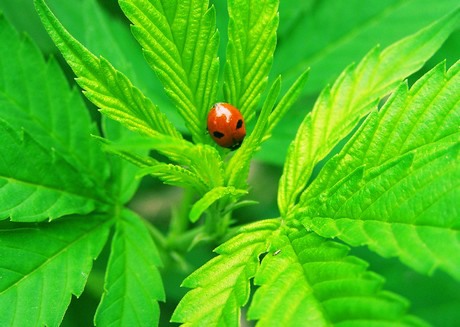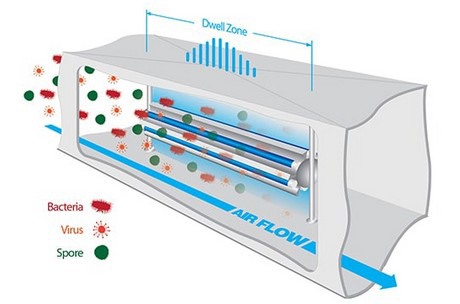“The field of crop protection in the cannabis industry is progressing,” says Normand Brais, Ph.D., chief scientist with Sanuvox Technologies. “However, at the beginning, people thought they knew how to do it properly, and then they just proceeded doing what they were used to doing. And this is why many products out there got recalled, as tests showed high levels of compounds which shouldn’t be on medicines.”
Looking at the chemistry
Normand recalls a conference he attended in Toronto. “Two years ago, I was at a conference in Toronto where doctors were discussing medical cannabis,” he recounts. “They were talking about molecules, the chemistry. This is because they had a pharma perspective on the matter, which means that you don’t want any impurities on medicines, and you have the technology to find that out.” According to him, this realization was game changing for the industry, as people understood they were being monitored. “When it was illegal in Canada, the underground would make anything utilizing any kind of product, and everyone was forced to accept that. But then, these same people came to do it legally. Yet, they didn’t have the knowledge to do that: they knew how to grow some cannabis in the basement, but didn’t know anything about the chemistry.”

Normand continues to explain that when these growers started selling their products to the medical industry, they got rejected. “This was caused by the fact that when their products got tested, a variety of chemicals and disinfectants were found on the flowers.” According to him, it took 2 years of adjustment before the situation got to an appropriate point. “It was a disaster for patients,” he says. “Then, growers started eliminating chemicals, and being careful about the grow conditions. They built new facilities where they could control all the people coming in, for instance, keeping the place very clean: no one can go in and out without going through a check. However, that is not enough, because mold spores are everywhere, they were on the planet before the advent of humans, so to say.”
The omnipresence of mold
He further explains the omnipresence of mold spores: “They are on people, on clothes: we are walking pathogen carriers. That is why it is of the utmost importance to opt for a technology that allows you to control that. Cannabis operations focus on only one crop under one environmental condition. It is free lunch for some mold species [SM2] that are well adapted to that condition. It is as if it was an open buffet for them, as they have no predators.”
According to Normand, the moment when mold has made roots inside the leaves, then it is too late. “When you start seeing it, it is already too late, and millions of mold are on the leaves.” In order to prevent that, growers have started installing filters through which air coming into the facility would get sanitized. “The thing is that most of the air in facilities has been recirculated. That’s because you control temperature and humidity, and only roughly 20% of the air is ‘fresh’. So, if the recirculated air is moldy, then you just spread it all around.”
Allowing the plant to defend itself
However, it is important to keep the air moving within the grow room, as this would allow the stem of the plant to be strong enough to withstand the weight of the flower. “That is why I have developed a model that calculates how much germicidal UV dose I need to put in to keep the mold in check, to sterilize their spores as they pass by. Getting rid of them completely is impossible; what you can do is to keep them to a level so that the plant is able to defend itself.” Plants can withstand some aggression, just only to a certain threshold, beyond which they would become infected. “That is why it is crucial to keep the mold level below that threshold to have an environment where the plant can thrive and defend itself from pathogens.”

In order to understand the right dosage of UV that a plant needs to survive without much difficulty, Sanuvox has developed informational data that can calculate that. “The sizing of the facility is important,” says he. “In greenhouses, you have bigger air volumes to treat, so you will need more UV disinfection. Indoors, the ceiling is lower, and you have a much smaller air volume to treat.”
A more knowledgeable industry
Compared to previous years, growers are getting increasingly knowledgeable, especially thanks to the lessons they have learned from their mistakes. “I think that as soon as consolidation will occur, the same thing will happen that happened to pharma,” he points out. “That is, people will get together and set standards. Air sterilization will be part of it. Guidelines will be outlined that growers can follow in order to prevent any pathogen outbreaks. It is crucial to have data on how fast pathogens grow, to know the reaction time when you need to fight them.”
For more information:
Sanuvox Technologies
146 rue Barr, Montreal, QC H4T 1Y4, Canada
1-888-726-8869
info@sanuvox.com
growsaver.net
